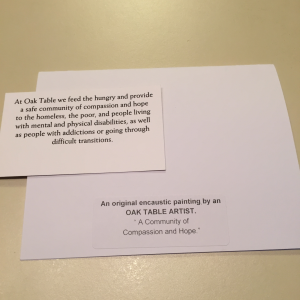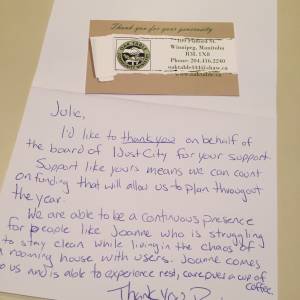Getting people to give in JuneI’ve been annoyed whenever I see social impact organizations asking me on social media or in emails to vote for them to compete for $10,000 (or whatever the amount). They’re not engaging donors this way, and not even raising money. However, The Great Canadian Giving Challenge has helped organizations use the power of their networks to encourage donors to give. In June – one of the slowest times of the year in fundraising. In 2016, in its second year, the results were impressive. According to givingchallenge.ca: 52,000 Canadians participated, donating more than $8 million to over 8,600 charities, representing a 48% increase in donations compared to June 2014 and a 28% increase compared to 2015. Charities involved in #GivingChallengeCa for 2 years in a row earned 164% more vs. the 28% average increase. It works like this: During June, donors give either through givingchallenge.ca or CanadaHelps.org. Every dollar donated to a registered charitable organization gives one entry into the contest for that organization. (Minimum donation of $3). Organizations have access to a toolkit to help them create customized campaigns, with logos and strategies. The hashtag #GivingChallengeCA helps keep people up to date and gives them a chance to share. The draw for the $10,000 is July 1. Now go work your social media! Julie Mikuska. · It pays to keep your donorsWe hear all the time from organizations about getting new donors. Yes, it’s important to bring new donors in, but it’s even more important to keep the donors you have. The 2017 edition of the Fundraising Effectiveness Project results was recently published. Here are some of the sobering findings from 10,829 non-profit organizations:
(Gains are gifts by new donors + recaptured lapsed donors + increases in gift amounts. Losses are decreases in gift amounts + lost gifts by lapsed new and lapsed repeat donors.) What does this tell us? Organizations do a poor job at keeping their donors, and as a result, they are continually chasing new donors, at great expense. It’s much more cost-effective to keep the donors you have than to continually chase new donors. The results vary by size of organization. Smaller organizations fare much poorly that larger organizations, which means resources dedicated to retaining donors make a difference. The FEP site has tools to help you analyze your data so you can make decisions on where to put your time and money in keeping your donors engaged. It’s not just about the bottom line of how much comes in. You need to know who your donors are. Don’t treat all your donors the same. Heap more love on your loyal donors and ask them to give more. But do make sure new donors know they are valued and welcome, and chances are some will give again and again. Julie Mikuska. · In a world where everyone gets enoughDo you have enough? What does having enough mean? Having enough means you can participate in society with dignity. Those that don’t have enough have to rely on the charity of others. And that can take away their dignity. Think about those who don’t have enough – they’re panhandling for food, visiting a food bank to pick up a few canned goods, sleeping at the shelter or on the street, and looking for donated clothing and shoes. Their Employment and Income Assistance (EIA) cheques aren’t enough to have enough to eat, find adequate and safe housing or buy warm clothes. And it’s even worse for those that have to provide for their children or those with a disability that prevents them from participating in the workforce. Most are deeply ashamed. Now let’s think about providing everyone with a basic guaranteed income. Instead of panhandling, they’re going to the grocery store and buying the food their family needs. They’re clothing their family and finding safe and affordable housing. They’re going to school. All without having to rely on the charity of others. They’re participating in society and contributing to the economy. With dignity. We need to take care of our citizens, so everyone can realize their hopes and dreams. Canada is a caring country and we’ll all be richer for it. Laura Mikuska · What happens when your fundraiser moves on?There’s been a trend among social impact organizations for some time that sees development staff stay for about 18 months, then move to another organization or leave the profession altogether. For many organizations, this becomes a set-back which may take months or years to make right. Know that this may happen in your organization, what can you, as leaders, do before and after it does? Before: Take steps now to understand what’s going on with major donors, where they are in the donor cycle and what the quality of the relationship is with them. Make sure all contacts with donors are being recorded in your database. Great notes make for a great institutional memory. Support your staff through professional development, career advancement and great working conditions. (who knows – they may not leave after all…) Encourage a culture of philanthropy and engagement throughout the organization, so that donors may have relationships outside the development office. After: Do not rush to hire an experienced fundraiser, especially one who doesn’t understand your mission, as you may be in the same position in 18 months. Do consider recruiting someone who has a passion for what you do and the skills to be come a development professional, and invest in a consultant to coach them into a new career. Examine the reasons they may have left (as they may not be forthcoming about underlying conflicts that caused them not to want to continue working there). For example, did you pile every conceivable type of fund development activity into one job? It’s hard to expect one person to do events, major gift fundraising, direct mail, third-party fundraising, ticket sales, etc. and do any of it well. If the departure was sudden and you didn’t have time to debrief on donors, call them and explain what the situation is. Don’t just leave them hanging. Take steps to stop the revolving door. You and your donors will be much better off. Julie Mikuska · A true giftI received a lovely gift in the mail today – a handwritten thank you on a card featuring the artwork of a client, hand-addressed with a real stamp on the envelope. A real stand-out in my mailbox! The card was from 1JustCity, an umbrella organization in Winnipeg bringing together four community ministries: Oak Table, North End Stella Community Ministry, West Broadway Community Services and St. Matthews Maryland Community Ministry. They do amazing work and, in their own words, they “love the under-loved.” And we get to work with them as clients. And in one short card, they told me what a difference I’m making in the life of one person. And because I’m a monthly donor, I’ll think of Joanne and others like her every month as I’m notified of my donation through CanadaHelps. How are you thanking your donors? Julie Mikuska
· Donors are not widgetsDonors are not widgets. They are not interchangeable. You can’t pick up a new lot at the hardware store. And they need maintenance. Now, I’m sure most people in social impact organizations recognize that donors aren’t widgets, but why then is there a tendency to concentrate on getting new donors and not on keeping the ones you have? The longer donors stay with you, the longer they stay with you. And that means you don’t have to go out looking for so many new donors, many of whom won’t stay with you. Your loyal donors are the ones who get how important monthly giving is. And they may increase their annual gifts over time. Plus they are great candidates to approach about putting you in their wills. So concentrate on loving the people who already love you – the donors! Make strategies to get to know them and to let them know how important they are to you. Remember: they’re people, not widgets. Julie Mikuska · Tell me everything and I’ll see nothingI was excited to receive an envelope of material from a social impact organization that I supported last year. As it looked like there was a lot of stuff in the package, I looked forward to pulling it apart and reading it. Alas, it fell flat. It contained:
And why is that a bad thing? There was no focus to the package and it was not donor-centred. It was a big collection of everything the organization wanted to tell me about the good work they are doing in the community. But it didn’t involve me, celebrate me or tell me the ways I’m doing good in the world by having an impact on individuals. There’s a whole lot of “we” in the materials and very little “you.” Even in the letter asking for my gift. And while there were two stories talking about impact in the newsletter, neither of them said “Because of you, this happened,” or “Without you, the opportunity for this person to have a future wouldn’t happen.” I don’t need to see corporate logos in my newsletter. That’s recognition for them, not me. I need stories about the difference I am making in the world. Separate your messages i.e. don’t send a letter asking for gifts with an invitation to the AGM – send it separately with a pledge card. Send a donor-focused, story-filled newsletter to donors telling them they’re your heroes, not a bragging newsletter about how great you are. Don’t just dump a whole pile of messages into one package to save on postage. You’ll get better results by tailoring your messages. Because then I’ll be inclined to read what you send, instead of sending the lot to the recycling bin. Julie Mikuska · Time to think about your legacyDo you have a valid and up-to-date will? Yes, I’m talking to you. Not about donors leaving your organization a bequest. We all need a will that sets out our wishes after we die, including who gets what part of your assets and who will be asked to be executor. It’s really important to do this while you are able and to not put it off until it’s too late and the division of your legacy is left to strangers or squabbling relatives. Think, too, of your own legacy and which social impact organizations have meaning to you. You may not be able to give large donations while you’re living, but you, too, can make a huge impact through your estate. The Winnipeg Foundation, along with the Manitoba Bar Association and the Public Guardian and Trustee of Manitoba, is presenting the annual Will Week May 2 to 6, 2016. Take advantage of a host of seminars to learn how to create a will, update your existing will and how to arrange for charitable giving in your will. The Winnipeg Foundation is also holding Bequest 101 sessions in May and early June. So, if you have a will that represents your wishes and creates your legacy – wonderful! If not, now’s the time to act. Julie Mikuska.
· Canada Helps donors more generous – what that means for youThe AFP Foundation for Philanthropy released the results of its biennial survey of Canadian donors in March entitled What Canadian Donors Want. For the first time this year the foundation partnered with CanadaHelps, a national social impact organization that promotes charitable giving in Canada, and provides a portal for charities’ online giving. They surveyed CanadaHelps donors and compared their giving behaviours to the general population. Some interesting results:
What does mean for your organization?
The survey results have lots of fascinating details on donors’ actions – I recommend you check them out. There’s also a recorded webinar discussing the results, along with the presentation slides. Do you know what your donors want? Julie Mikuska · Invest in your peopleHands up all you fundraisers that rarely, if ever, get to attend a professional development session on fundraising. In this virtual room, my guess is that a lot of you metaphorically raised your hand. What other sector would place so little emphasis on professional development and continuous learning? A lot of social impact organizations see PD as an expense, and it’s usually the first thing to be chopped in the annual budget cutting exercise. That’s a short-sighted move that is detrimental to the entire organization. Investing in staff’s professional development is an investment in the organization. Learning new and innovative techniques, hearing about ideas that have worked in other organizations, and networking with other fundraisers can be a huge motivator. And chances are greater that you’ll remain in your position far longer if you aren’t looking around for an organization that’s willing to invest in you. A recently-released study, Major Gift Fundraising: Unlocking the Potential for Your Nonprofit, also revealed that for every PD opportunity that a fundraising staff attended, there was a strong correlation to fundraising performance. “Each additional form of training/education is associated with an increase of $37,000 (USD) in income.” That’s astonishing! Now point that out to your ED/CEO and get your training back in the budget. Laura Mikuska · |
Blog Archives
Articles By Category
|










